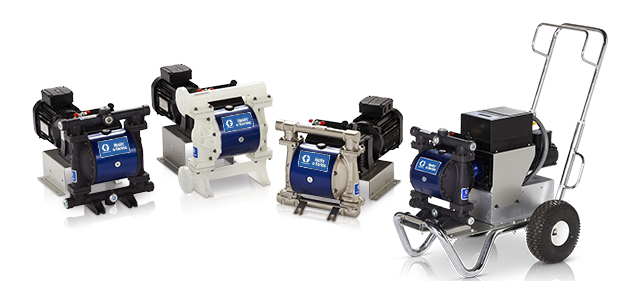By Jeffrey Shaffer, Product Marketing Manager
Peristaltic pumps have a longstanding tradition of being used to supply lime slurry for waste water pH adjustment. The peristaltic pump’s success in this application is due to its ability to accurately meter and adjust the supply of lime slurry based on the volume of waste water being treated. Because a peristaltic pump does not contain checks in the fluid line, the result is less plugging and clogging of slurry over time when compared to a diaphragm pump in the same application. Similarly, the industrial style hoses within peristaltic pumps are made to withstand the abrasive nature of lime slurry.
Challenge
A large industrial company within the energy services market was well aware of the benefits of peristaltic pumps for their waste water treatment facility, but the company’s high flow rates of lime slurry for the treatment of large volumes of waste water was causing them to take a second look at their two peristaltic pumps in operation and seek alternative solutions. Standard peristaltic pumps with a size of 1.5” or 2.0” cannot support high flow rates, up to 45 GPM, of lime slurry. Larger peristaltic pumps are necessary to achieve the desired flow. However, as this large industrial company discovered, the size requirement and carbon footprint of larger peristaltic pumps can become very costly: pricing goes up, more hose lubricant is required, hose life can deteriorate, and the pump can take valuable space in the facility.
The user in reference was running 19 mm hose pumps in their current installation at a VFD setting of 40 hZ which resulted in a flow rate of approximately 9 GPM and pump rpm of 60 for their water treatment needs. For each line, they were required to run two pumps providing a total flow rate of 18 GPM. Due to their pumps running 24 hours per day to keep up with production requirements, the hose pumps were putting on just under 2 million cycles per month. This is a significant number for any hose and they were repairing the pump by replacing the hose once every 6 to 8 weeks during production.
One major issue, this company noted, is that large peristaltic pumps of 3 square feet or larger can cause issues in installations where space is at a premium, which would include many waste water treatment facilities. Not only is the unit larger, but additional space is also needed surrounding the pump to allow for the frequent repair and hose replacement during maintenance. Many facilities do not view this as an efficient use of space. The bulky size paired with a steep price tag starting upwards of $10,000 per unit becomes an expensive investment both upfront and in daily operations.
Another obstacle that this industrial company preferred to avoid was the frequent and costly maintenance that is required with large peristaltic pumps being operated at high flow rates. Their biggest complaint about their two smaller peristaltic units was the frequent hose replacement every 6 to 8 weeks. They learned the issue of hose maintenance on a large peristaltic model would not disappear unless the pump was sufficiently large enough to run slowly. In fact, hose maintenance could be even more burdensome on a large unit because large hoses cost more, require more messy and costly lubricant, and are more difficult to replace.
Solution
The industrial company came to Graco seeking a solution to their waste water treatment needs. The company asked about Graco’s peristaltic options, but instead they discovered the Husky 1050e, an electrically operated double diaphragm pump. To the company’s relief and astonishment, the electric double diaphragm pump met their flow rate requirements without the negative effects of space, energy use, and frequent maintenance seen in large peristaltic designs. In addition, they were pleased to learn that the 1050e has been previously tested in-house by Graco to ensure that the double diaphragm pumps can handle 30% lime solution without any negative side effects.
In most installations, the internal seats, balls, and diaphragms of the Husky 1050e should outlast peristaltic hoses as long as the proper material for the internal wetted parts and elastomers are selected. To handle the abrasive nature of lime slurry, Graco recommended installing stainless steel seats, polychloroprene weighted check balls, and overmolded polychloroprene diaphragms.
For this user, one Husky 1050e was installed on one of the high volume lines to replace two of the 19mm peristaltic pumps. Since the 1050e has a continuous duty rating or up to 30 GPM, the 1050e was able to achieve the combined 18 GPM requirement of both pumps. The initial goal for end user maintenance was 6 months operation without any required troubleshooting or repair.
Results
The industrial company was please to replace two peristaltic pumps with one Husky 1050e while reaching their performance requirements. The Husky 1050e electric double diaphragm pump was installed for a 14 month trial period and did not need any maintenance for the entirety of this period. The user observed that this considerably saved his company in downtime and maintenance costs when compared to peristaltic options, in which they previously replaced hoses every 6 to 8 weeks. On top of this, the electric double diaphragm pump saved space and cost upfront. Both the company’s maintenance staff and industrial facility alike declared a win for the electric double diaphragm pump.
Request a Free Demo pump today by visiting the Husky 1050e site!




